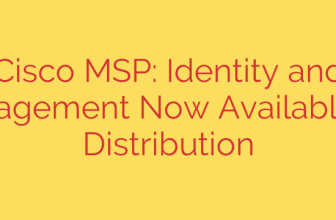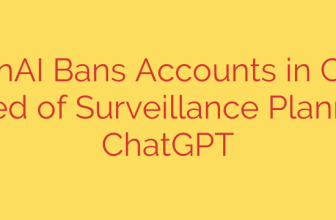
Unlocking Network Clarity: How to Build a Standardized Segmentation Taxonomy
Does your organization’s network naming convention feel like a free-for-all? One team calls the public-facing zone the “DMZ,” another calls it the “Perimeter,” and a third simply labels it “Untrusted.” This lack of a common language creates confusion, leads to inconsistent security policies, and turns security audits into a nightmare. To build a truly secure and manageable network, you need a single source of truth: a standardized segmentation taxonomy.
A network segmentation taxonomy is a structured classification system that brings order to your network. It ensures that every engineer, analyst, and administrator uses the same terminology to describe different parts of the infrastructure. This clarity isn’t just about tidiness; a well-defined taxonomy is a foundational element of a strong security posture, enabling consistent policy enforcement, simplified auditing, and effective automation.
Why a Standardized Taxonomy is Crucial for Network Security
Implementing a standard naming convention for your network segments delivers immediate and long-lasting benefits that go far beyond simple organization. When everyone speaks the same language, security and operational efficiency improve dramatically.
Key advantages include:
- Unambiguous Clarity: Eliminates confusion by providing a single, universally understood name for every network segment.
- Consistent Policy Application: Enables the creation and enforcement of uniform firewall rules and access controls across the entire enterprise.
- Simplified Auditing: Drastically reduces the time and effort required for security audits and compliance checks, as auditors can easily understand the purpose and trust level of each segment.
- Enhanced Automation: Provides a logical and predictable structure that is essential for automating security workflows, from provisioning new segments to responding to incidents.
The Three Pillars of an Effective Segmentation Taxonomy
A robust taxonomy is built on a clear hierarchy. By breaking down the classification into distinct levels, you can create a system that is both comprehensive and easy to understand. A highly effective model is based on three hierarchical pillars: Environment, Trust Zone, and Network Function.
Level 1: The Environment
The Environment is the highest level of classification, separating your most critical assets from development and testing areas. This fundamental division is the first line of defense in preventing non-production issues from impacting business operations. Every network segment should belong to one, and only one, environment.
Common examples include:
- Production (PROD): Live systems that serve customers and support core business functions.
- Development (DEV): Sandboxed areas for developers to build and write code.
- Quality Assurance (QA): Environments for testing new applications and updates before deployment.
- Staging: A pre-production environment that mirrors the live setup for final testing.
Level 2: The Trust Zone
Once the environment is defined, the next layer is the Trust Zone. Trust Zones classify segments based on the level of security and access control required, dictating how strictly traffic is monitored and filtered. This classification is directly tied to the sensitivity of the data and systems within the zone.
Essential Trust Zones typically include:
- Untrusted: The public internet or any external network where threats are assumed to be present. This is your frontline (e.g., the DMZ).
- Trusted: Internal networks for general employee access, where users and devices have a baseline level of trust.
- Restricted/Sensitive: Highly secured zones that house critical data, such as databases with customer information, payment processing systems, or privileged access management servers. Access is granted on a strict need-to-know basis.
Level 3: The Network Function
The most granular layer is the Network Function. This provides a clear and concise description of the segment’s specific purpose. It tells you exactly what kind of services or applications reside within it, allowing for precise policy creation.
Examples of Network Functions include:
- Web: Web servers that handle incoming HTTP/S traffic.
- App: Application servers that process business logic.
- DB: Database servers storing critical information.
- Mgmt: A dedicated network for managing infrastructure devices like routers, switches, and firewalls.
- Voice: A segment for VoIP phones and communication systems.
Putting It All Together: A Practical Example
When combined, these three pillars create a descriptive and intuitive naming convention. For instance, a segment named PROD-RESTRICTED-DB instantly tells you everything you need to know:
- Environment: It’s a Production system.
- Trust Zone: It’s in a Restricted zone, meaning it contains highly sensitive data and requires stringent access controls.
- Network Function: It houses Database servers.
This clear label allows a security engineer to immediately understand that only traffic from the “PROD-TRUSTED-APP” network on specific database ports should be allowed, and all other access should be denied.
Actionable Steps to Implement Your Taxonomy
Ready to move from chaos to clarity? Follow these steps to establish a standardized segmentation taxonomy in your organization.
- Gain Stakeholder Buy-In: Work with teams across IT—including networking, security, development, and systems administration—to agree on a standard. A taxonomy is only effective if everyone uses it.
- Define Your Hierarchy: Use the Environment, Trust Zone, and Network Function model as a starting point. Customize the specific names and categories to fit your organization’s unique structure and needs.
- Document Everything: Create a central document that clearly defines each level and provides examples. Make this document easily accessible to all relevant personnel.
- Integrate and Enforce: Begin implementing the new naming convention in your firewalls, cloud security groups, IP Address Management (IPAM) systems, and all network diagrams. Consistency is key to success.
- Review and Refine: A network is not static. Schedule periodic reviews (e.g., annually) to update your taxonomy as new technologies and business requirements emerge.
By establishing a standard taxonomy, you transform your network from a complex and confusing web into a logical, secure, and manageable asset. This structured approach is no longer a “nice-to-have”—it’s an essential practice for any organization serious about network security.
Source: https://feedpress.me/link/23532/17180784/defining-a-standard-taxonomy-for-segmentation








